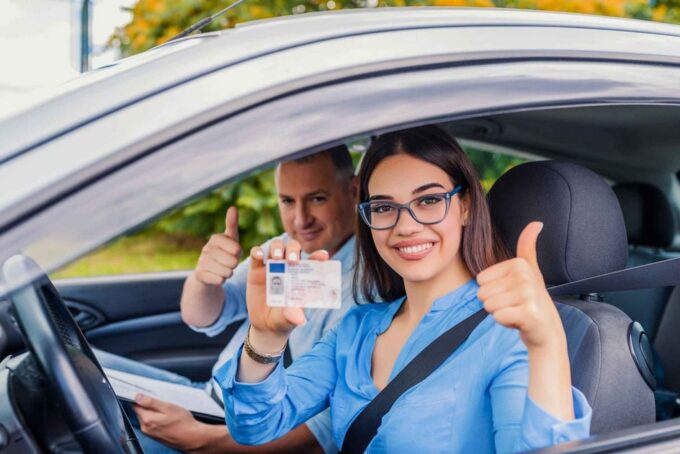In the current age, it’s almost mandatory for a person to be capable of driving. After all, the distances we often need to cross are rather large and public transport can leave a lot to be desired at times, especially if our routes deviate from the standard.
However, getting a driver’s license is a whole other issue that varies in difficulty depending on the country we are located in. Today we are looking at the prerequisites for a driver’s license in Canada, both for those already in possession of a driver’s license and those eager to get it.
Driving with a foreign driver’s license

Source: brokerlink.ca
If you just arrived in Canada and are still working on adapting your documents to the new area you needn’t worry about the repercussions of using a foreign driver’s license. If it’s a legitimate one you can still use it for up to 90 days, depending on the province, before having to switch to a Canadian one.
Of course, make sure to check the local area’s rules on driver’s license as soon as possible. This will give you all the necessary information and help you avoid accidental breaking of province laws.
The act of converting the license to a Canadian one can be made very simple depending on the country you are from and the province you are coming to, as it allows you to get an IDP. The permit can be applied for if your country belongs to the group that adheres to it.
This will allow you to drive in any of the countries from that group without any additional testing. However, if you do not fulfill these conditions you’ll likely end up with some extra testing.
Passing a driving test in Canada

Source: registriesplus.ca
Canadian driver’s license process includes one written exam and either one or two road tests, this also depends on the province just like all the previously mentioned rules. For legal driving of cars, vans, and small trucks you’ll require a G class license which has certain prerequisites.
Before you even get to do any actual tests you need to apply for a driver’s license. To apply you need to be at least 16, pass an eye test, and pass a written test. Finishing these three steps gets you a G1 license. The license tags you as a beginner driver who needs to accumulate experience for a full-fledged driver’s license. You can drive a car while accompanied by an experienced driver but you cannot drive at night or on highways.
The last two restrictions exist to reduce the number of accidents that may occur in these more dangerous conditions, especially due to beginner mistakes a newbie driver could make. If you want additional means of preparation for the written test as well as the other driver’s license tests, check out drivingtestcanada.ca. They’ll provide you ample knowledge in each of the tests, helping you train for road tests with multiple simulations of real-life traffic situations.
After you’ve finished these initial steps, it’s time to study for the real deal. The next goals in obtaining your license include finishing the two learning levels present, G1 and G2. The practice you’ll do with the G1 license will usually last for a year, giving you ample time to learn how to utilize the rules. We have to reiterate that this training period requires an experienced driver to be in the same car.
The added stipulations are is that the driver has to drive for four years before being eligible to accompany you and have less than .05 of alcohol in their blood. This limit applies to you as well, this applies to all drivers.
The first road exam tests your basic driving skills so it shouldn’t feel overwhelming. Turning left and right, stopping, parking, proper procedure of turning on and turning off the car, and other simple aspects of driving a car are all encapsulated within this exam. After you pass the exam you are awarded a G2 license.
This puts you in the last stretch of the learning experience. The G2 license lifts some restrictions you’ve previously had. You no longer need another experienced driver in the car to drive, you can do so on your lonesome, and the night, as well as highway restrictions, are lifted. This means you can drive on any road at any time of day. Of course, some provinces may have certain changes to the privileges but that’s something to check with your driving instructor.
Other restrictions may apply if you are 19 or below. For example, in Ontario, you are allowed one passenger who is 19 or under in your car when driving after midnight. After half a year of having a G2 license, you are allowed three passengers instead. Due to the extent of circumstantial rules present, we suggest you read the local restrictions throughout as it may save you the trouble.
After it all, you’ll finally go to the second road test. This is done 12 months after you get a G2 license and includes difficult driving maneuvers. It will also test your capabilities while driving on different roads and your skills with car control. You have five years to finish the course or you’ll have to start over.
Conclusion

Source: cbc.ca
As we’ve seen from the long training period filled with restrictions, a Canadian license can be troublesome to get if you don’t already have a foreign driving license. It takes a while to get proper training and fulfill all the prerequisites while keeping in mind that any mistake can endanger your license.
Canada uses a demerit system to keep track of driver’s capabilities and adherence to the laws of the road. Keep in mind that this system can result in you losing your license even if you’ve gotten to the full G license.
Getting educated on your province’s rules and focusing on studying for the exams is paramount to achieving a license. Respecting laws is key to keeping one and ensuring a safe driving experience for everybody.







